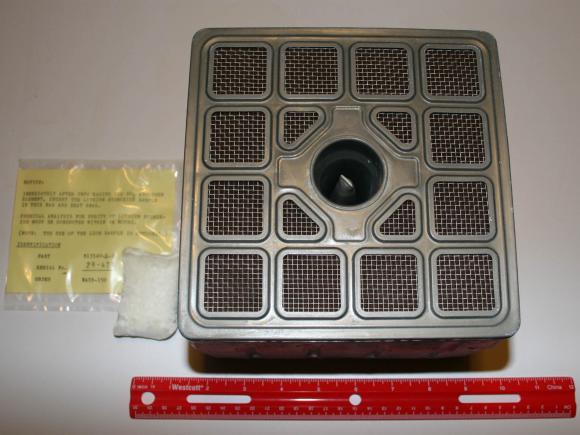Artifact: Lithium Hydroxide (LiOH) Canister, Apollo Command Module, Block II
Aluminum, Lithium Hydroxide, Charcoal, Fabric, Steel
An expendable Command Module CO2 absorber element produced by AIRESEARCH; used in conjunction with the CM Environmental Control Unit to regulate particulates and carbon dioxide within the cabin. The unit weighs 8 pounds and measures 7x7x5 inches.
CO2 absorber elements of Lithium Hydroxide (LiOH) and activated Carbon were used to remove trace contaminants and metabolic carbon dioxide; each element was sized for 1.5 man-days of operation at the designed metabolic loads, and the elements were changed by the crew alternately every 12 hours. 20 elements were carried for 8-10 mission days initially; this was increased to 30 for the extend "J" missions (Apollo's 15-17).
A similar CO2 absorber element was employed onboard the Lunar Module but was sized/shaped differently (the CM used this "Mailbox" scrubber; the LM employed a cylindrically shaped canister). During the Apollo 13 Mission, as a result of an explosion in the Command Service Module Liquid Oxygen tank which provided the crew and Fuel Cells with oxygen, the Lunar Module was needed as a "life boat" but was only designed to accommodate 2 crew members; the requirement to support the third crew member and affiliated increased metabolic loading rapidly expended the LM CO2 absorber elements. The Command Module CO2 absorber elements were needed in the LM. Working with Mission Control in Houston, the astronauts fabricated a novel adapter from existing material onboard the spacecraft (plastic bags, plastic-coated cue cards, spacesuit hoses and lots of duct tape) allowing the Command Module's square canisters to be interfaced to the Lunar Module Environmental Control System (ECS), preventing a dangerous buildup of carbon dioxide.

